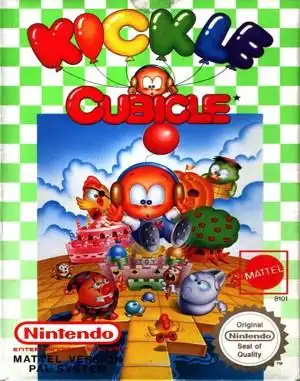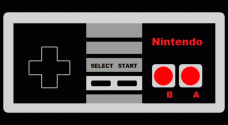Picking up an old grey cartridge, sometimes you stumble upon a game that just clicks. For many retro enthusiasts, that game was Kickle Cubicle NES. Developed by Irem, a company perhaps better known for the shmup classic R-Type, Kickle Cubicle offered a completely different, yet equally brilliant, experience on Nintendo's 8-bit console. It's a puzzle game that wrapped clever mechanics in a charming, albeit slightly frosty, package.
Let's journey back to the frozen Fantasy Kingdom and rediscover why this title remains a beloved, if somewhat hidden, gem in the NES library.
What is Kickle Cubicle? A Chilly Premise
Originally an arcade game from 1988, Kickle Cubicle made its way to the NES in 1990. The premise is simple, classic fairytale stuff: the Wicked Wizard King has frozen the entire Fantasy Kingdom and its inhabitants solid. You play as Kickle, a small, round protagonist who looks like a cute, walking ice pop. Your mission? Traverse the frosty lands, solve puzzles, and collect the three Dream Bags in each stage to free the kingdom's citizens.
It sounds straightforward, but the genius lies in how you interact with the frozen world.
Mastering the Ice: Core Gameplay Mechanics
Kickle isn't armed with fireballs or power-ups. His abilities are unique and centered around ice manipulation:
- Freezing Enemies: Touch most enemies, and they instantly turn into a block of ice.
- Kicking Blocks: Once frozen, enemies become movable blocks that Kickle can kick across the screen.
- Creating Ice Pillars: On specific spots (usually marked), Kickle can generate a temporary ice pillar.
These three simple actions are the foundation for solving every puzzle. You'll use frozen enemies as bridges over water, push blocks to clear paths, create barriers against hazards, or even use pillars to trap enemies or reach new areas. The controls are tight and responsive, crucial for a game where precise movement and block placement are key.
The goal of each stage is to collect three sparkling Dream Bags. Doing so opens the exit door, leading you to the next challenge.
The Puzzle Design: Clever, Challenging, and Varied
Kickle Cubicle's level design is where it truly shines. Stages are compact, screen-sized puzzles where every element matters. You'll encounter:
- Water Hazards: Requiring you to build ice bridges by kicking blocks or freezing enemies.
- Various Enemy Types: Each with different movement patterns that dictate how you can freeze and use them. From simple walking 'Noggles' to bouncing 'Springies' and aggressive 'Spikies', understanding enemy behavior is vital.
- Environmental Tools: Cannons that shoot enemies, hammers that break blocks, and springs that launch Kickle across gaps add layers of complexity to later levels.
- Obstacles: From solid walls to one-way paths and fragile ice blocks that break after one use.
The game is structured into different "lands," each with 15-20 levels. The difficulty ramps up steadily, introducing new mechanics and combining old ones in increasingly tricky ways. While some later levels can be real head-scratchers, the pacing feels excellent. Shorter, simpler levels are often interspersed with tougher ones, providing satisfying breaks and keeping frustration at bay. Boss battles occur at the end of each land, though they often feel more like large-scale puzzles than traditional fights.
US vs. Japan: Subtle Differences, Big Impact?
Like many NES games, the Japanese version of Kickle Cubicle had some differences compared to the US release. The most notable are:
- Stage Order: The Japanese Famicom version allowed players to choose which land to tackle next after the first. The US NES version enforced a fixed, linear progression. While this removes some player agency, the US order is well-structured in terms of difficulty progression.
- Enemy Count: The US version often features slightly fewer enemies per level than its Japanese counterpart. This subtle change can slightly alter the puzzle solutions and overall difficulty feel, arguably making the US version a bit more forgiving in some spots while still maintaining a significant challenge.
Neither version is definitively "better," but these tweaks show the localization efforts went beyond just translation.
Why Kickle Cubicle Deserves Its Cult Status
Kickle Cubicle on the NES is more than just a competent puzzle game; it's a masterclass in using a simple set of mechanics to create deep and varied challenges. It demands spatial reasoning, planning, and often, quick reflexes. It's the kind of game that makes you feel genuinely clever when you finally solve a particularly tough stage.
It might not have the widespread recognition of Tetris or Dr. Mario, but its unique gameplay, charming visuals, and satisfying difficulty curve have cemented its place as a beloved classic for those who discovered it. It's a perfect example of Irem's often-overlooked creativity beyond their action titles.
Finding Kickle Cubicle Today
Experiencing Kickle Cubicle NES today requires a bit of effort. Original cartridges can be found on the secondary market, but like many retro games, prices can fluctuate. Emulation is another popular route for playing classic titles, allowing fans to revisit or discover the game on modern platforms. Unfortunately, official re-releases on modern digital storefronts like Nintendo Switch Online or platforms like GOG are not currently available, which is a shame for such a deserving title. Its absence highlights the ongoing need for retro game preservation and accessibility.
Frequently Asked Questions (FAQ)
Q: Is Kickle Cubicle a hard game? A: It starts fairly easy but becomes quite challenging in later levels, requiring careful planning and execution. It's a satisfying difficulty curve, not overly frustrating for most puzzle fans.
Q: What genre is Kickle Cubicle? A: It's primarily a puzzle game with action elements, sometimes categorized as a "action-puzzle" game.
Q: How many levels are in the game? A: The NES version features over 60 levels spread across different lands, plus bonus levels.
Q: Who developed Kickle Cubicle? A: The game was developed by Irem, the same company behind the R-Type series.
Conclusion
Kickle Cubicle is a prime example of an underrated NES gem. It took a simple concept – freezing and kicking blocks – and built a genuinely deep and engaging puzzle experience around it. Its charm, clever design, and satisfying challenge make it a standout title that deserves more recognition. If you're a fan of retro puzzle games and haven't played Kickle Cubicle NES, do yourself a favor and seek it out. It's a frosty adventure well worth taking.


